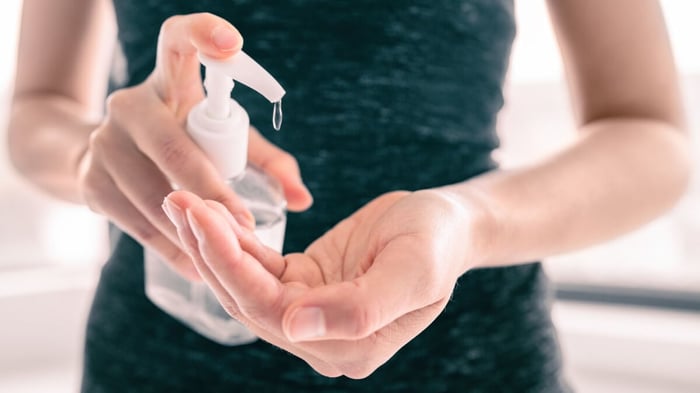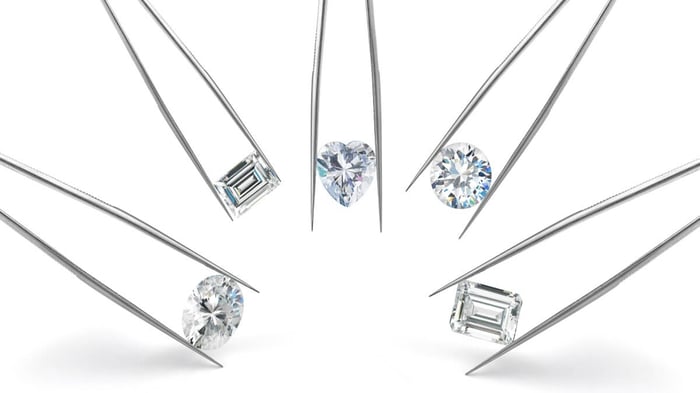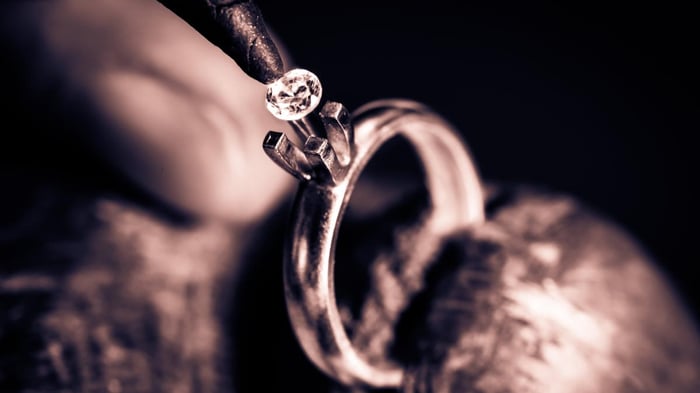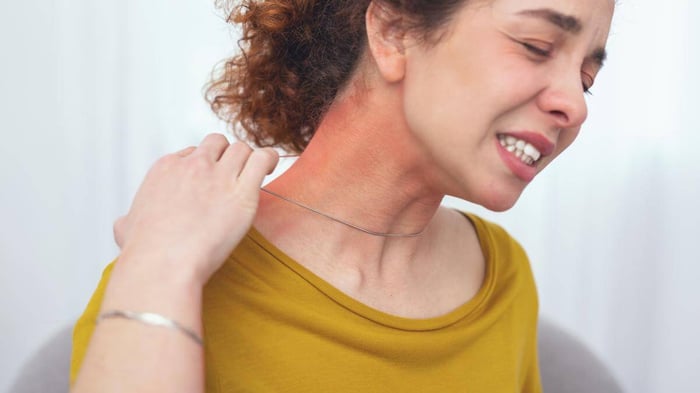Are Hand Sanitisers Safe For Your Jewellery?
A question that we have been asked quite often in recent months is whether hand sanitisers damage your jewellery.
The use of hand sanitisers has increased hugely of late, for obvious reasons. We expect that the habit of using sanitisers will not pass any time soon – and in many ways, we think that is no bad thing!
When we looked around the Internet we saw a huge amount of misleading and incorrect information so we thought it would be a good idea to write a blog post that addresses the issue and corrects some of the misconceptions floating around.
Hand hygiene is a good idea, it helps to protect us from all sorts of things, not just Covid-19. We support and encourage it. Washing with soap and water is always going to be the best option, but when we are out and about, soap and water are not always available or convenient and that’s where the now-ubiquitous little bottles of gel or hand sprays come in.
Permanent Or Temporary Jewellery Damage
Most people who have noticed an effect from using hand sanitisers in contact with their jewellery note that once shiny metals and precious stones now seem dull and lifeless. This is almost always a temporary effect caused by residues in the sanitiser that form a very thin film over the jewellery. If this is not dealt with in a timely fashion the residue can build up and become very difficult to remove at home – professional cleaning will be required.
For guidance about cleaning your jewellery to keep it at its best, please check out this article: Eight Ways To Clean Diamond Jewellery Without Using Harsh Chemicals
If you take care to regularly clean your jewellery at home then it is almost impossible for the dulling effect of film build-up to occur.
The damage that you should be more concerned about is permanent damage. This is where the metal or gemstones are altered by the contents of the sanitiser you use. Please note that damage is unlikely to occur from just a few exposures to hand sanitisers, the damage is, in almost every case due to long-term use and contact with the chemicals in the sanitisers. We will cover this type of damage below.
The Two Types Of Hand Sanitisers
Hand sanitisers come in two main types. There are alcohol-based products and chlorine-based types. The latter are often advertised and labelled as alcohol-free sanitisers.
Alcohol sanitisers, on their own, are unlikely to cause permanent damage to jewellery except for pearls. Alcohol is found in perfumes and hairsprays, as well as sanitisers. Jewellers have, for years, recommended keeping alcohol away from pearls.
Chlorine (alcohol-free) sanitisers are a little more problematic. This type is less effective at killing bacteria and viruses but they are also riskier when it comes to your jewellery. The chlorine compounds in these sanitisers can react with water to create free chlorine which is very reactive. Chorine can attack your jewellery and cause damage.
Alcohol-free Hand Sanitisers And Precious Metals
Yellow gold is the least susceptible to permanent damage. Gold will not react easily with chemicals including chlorine. There is no coating on the metal to wear away or become tarnished.
White gold can be slightly affected by alcohol-free sanitisers. The rhodium coating that gives white gold its beautiful sheen wears away over time and it is normal to recoat white gold jewellery every few years as this coating wears away. Alcohol-free sanitiser can increase the speed at which the coating wears away making recoating a more frequent occurrence. However, once recoated the gold will be fully restored to its former beauty.
Rose gold needs more care. The colour of the gold comes from copper mixed into the gold. Over time the chlorine in some sanitisers can react with the copper and change its colour. As there is no coating this change is difficult to undo and will need careful professional repolishing.
Platinum is, like yellow gold, very unreactive and so is unlikely to sustain any damage, apart from the build-up of film that will dull the shine of the metal. Regular cleaning at home will stop this from occurring.
Sterling silver jewellery presents the biggest problem as the silver is always susceptible to tarnishing and the chemicals in hand sanitisers will increase the rate at which tarnishing occurs. When tarnishing occurs, the only cure is to repolish the metal.
Hand Sanitisers And Precious Stones
Diamonds and other precious stones are formed in the bowels of the earth at high temperatures and pressure. They do not react with most chemicals and certainly not with those found in hand sanitisers. The only ill-effect of hand sanitisers will be the dulling effect of film build-up which can be removed by regular cleaning or occasional professional cleaning.
Pearls present a problem when hand sanitisers are used. The organic material that makes up a pearl can be damaged by water, alcohol or chlorine.
Hand sanitisers of all types can react with the surface of pearls causing permanent changes to the colour and texture. Over time, exposure to alcohol can make white pearls change to a yellowish colour and the beautiful lustre can be dulled. Chlorine can have a similar effect but will also tend to etch and pit the pearls removing their lustre and making them feel rough to the touch. These changes are permanent and can not be restored. Keep pearls away from water, alcohol and chlorine compounds of all types!
Anillo de compromiso de diamantes con montura de hombro certificada de 0,50 ct G/SI en platino

€1.585,95
Este hermoso anillo de diamantes es la máxima expresión del amor. Úselo como el anillo de compromiso perfecto para su persona especial. Este impresionante anillo está hecho con los mejores materiales en el Reino Unido para brindarle una vida llena… read more
Common Sense Precautions To Protect Your Jewellery
The best way to keep your jewellery looking good is to avoid using any hand sanitisers while wearing rings. Whenever possible remove your rings before applying hand sanitisers. If that is not practical, don’t worry too much – but bear in mind that a ring you wear every day such as an engagement or wedding ring is going to get more exposure than rings that you wear less frequently!
Hand sanitisers damage your jewellery if you do not take care. If you must use a sanitiser, always choose an alcohol-based product. Avoid using alcohol-free sanitisers; they are less effective and have a greater risk of causing damage.
If you have pearls set into a ring then always remove the ring before using sanitisers. Do not be in a hurry to replace the ring on your finger. Make sure that your fingers are fully dry before putting the ring back on. If you can, wait for about 5 minutes before wearing the ring.
Whatever kind of ring you are wearing, when you use hand sanitisers, don’t rush to pop your rings back on. Wait until the sanitiser has completely evaporated.
All Diamond Jewellery Cleaners
For regular and safe maintenance of your precious jewellery, we recommend using one of our safe to use jewellery cleaning products. We offer two products. There is a jewellery cleaning foam that will melt away jewellery grime and film that builds up over time and, to pop in your handbag of travel luggage we have jewellery cleaning wipes to give your gold and silver a quick wipe over to keep everything, including the precious stones looking good, wherever you are.
Collar de zafiro azul de 0,60 ct y diamantes G/SI de 0,20 ct en oro blanco de 18 k
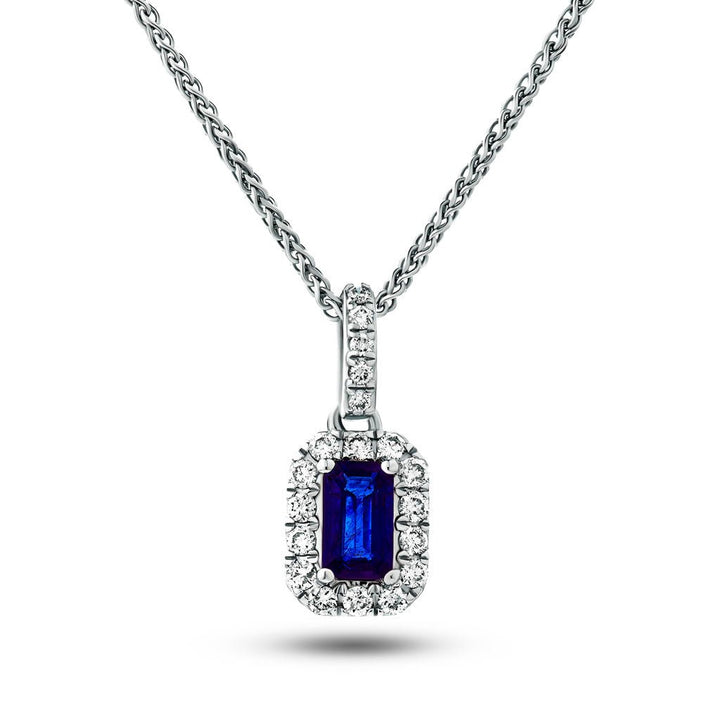
€1.040,95
De origen ético y talladas a mano, las piedras preciosas de este llamativo colgante de zafiro y diamante son impresionantes y están dispuestas a la perfección por nuestros artesanos del Reino Unido. La configuración segura de las garras garantiza que… read more
